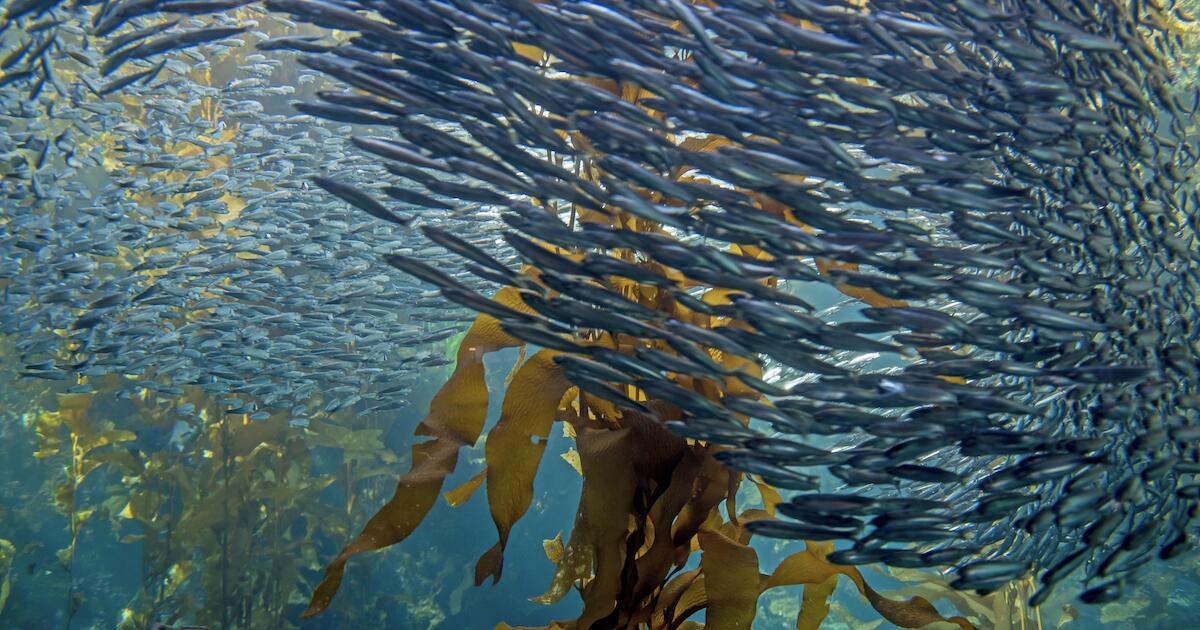
In British Columbia, natural baits are one of the top gear choices for salmon trolling, along with hoochies and spoons. Of the three, hoochies are the easiest to use, but have no action of their own. However, rigging one behind a flasher or dodger activates it. Spoons are the next easiest to use. They have a built-in action and can also be fished with attractors.
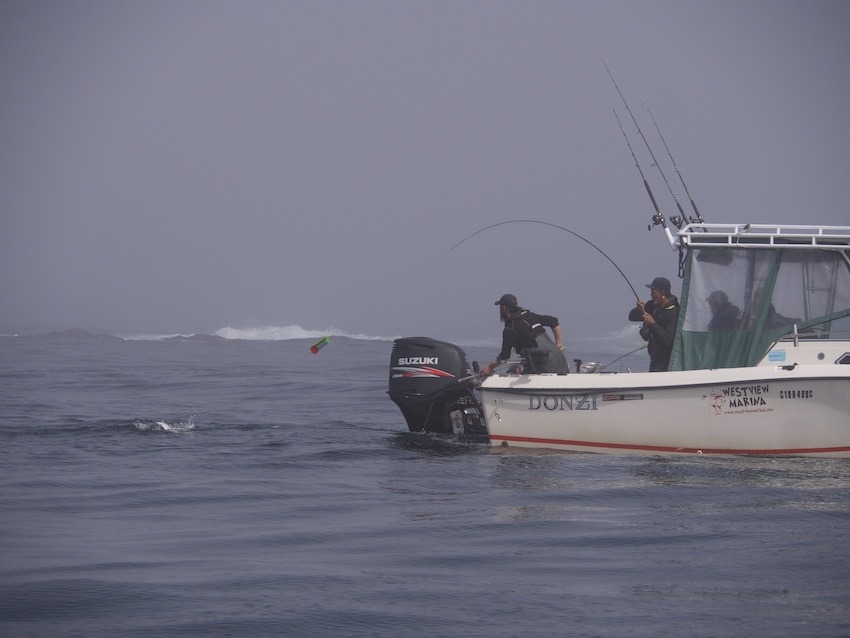
Fish on! Trolling for Salmon, Esperanza Inlet 2018 during the forest fires (haze is smoke) Photo: Island Fisherman
Spoon fishing requires some know-how, because the action can be affected positively or negatively by leader lengths and pound test, trolling speed, hook size and style, or damage that alters the spoon’s shape. Trolled baits have the steepest learning curve, because there is a relatively limited range of actions that produce fish and a whole bunch that don’t. There is a misconception among some anglers that flashers or dodgers compensate for poor bait action. This is not true, though they do enhance properly rigged bait actions. The easiest way to navigate the good roll/bad roll maze is to learn the basics of the actions that produce fish versus those that don’t. It takes some time but the rewards are worth the effort. Here is the simplest way to break it down:
The Propeller Spin
The Tight Roll
The head of the bait rolls tight, and the rest of the bait spins with a wide cone shape. This is not a fish catcher.
Before we dive into specifics, remember that it’s much easier to create effective rolls if you salt your baits prior to fishing. Use a brine solution made up of 1 part pickling salt to 3 or 4 parts water, or dry salt your baits by sprinkling pickling salt over them. In both cases baits need to be partly thawed before salting. If you salt frozen baits, they won’t toughen because the salt can’t penetrate deep enough into the flesh. After salting return them to your freezer.
Here are three rolls that are easy to learn and will put more fish on the end of your line. These techniques work well with all sizes of anchovies, as well as whole herring or pilchards from 5″ to over 7″ long.
Three Setups for Bait Trolling
1. The Broken Neck Roll
This is a great presentation for aggressively feeding winter Chinooks or late summer coho. Properly rigged, it has a darting roll with most of the action happening in the forward third of the bait from the teaser head to the front of the dorsal fin. It has a snappy stop-start action. Winter Chinook fishing often involves trolling very deep, which can require slower trolling to allow the gear to get to the correct depth. This setup maintains its snappy action at slower speed. If you fish this presentation for coho, use less bend to allow for faster trolling.

The Broken Neck Roll
2. The Drill Bit Roll
The drill bit roll has been around for a long time, and for good reason: It catches lots of fish, including feeder and adult Chinook, as well as coho. It rolls like a drill bit by rotating exactly on the bait’s axis and with as little wobbling action as possible. Because of the tight roll profile it relies more heavily on flashers and dodgers to jack up the action. In my experience, it’s a particularly good roll for dodgers because the dodger snaps the bait from side to side, whereas a roll with an exaggerated wobble is less compatible with dodgers. This presentation is really effective when fishing in strong current flows or at faster trolling speeds, because the drill bit profile travels through the water with less resistance than baits with a wider rolling action.
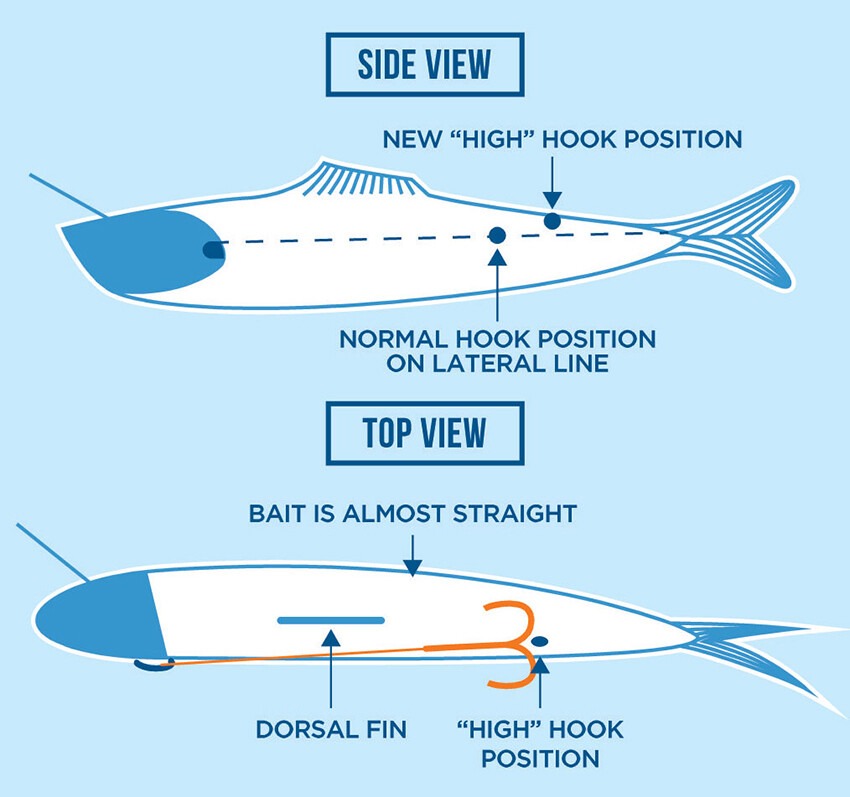
The Drill Bit Roll
3. The Corkscrew Roll
This roll is particularly effective on adult Chinook salmon in the final stages of their ocean migration. However the largest coho I’ve ever landed, which had to be released due to non- retention, fell for this roll during a Port Renfrew Labour Day Chinook salmon derby. This roll does not turn on the usual head-to-tail axis. It has a corkscrew action and is best fished at slow to normal trolling speed, but it can be tuned to run faster. When the bait is properly rigged, the tail follows the head in a diving/rolling action.
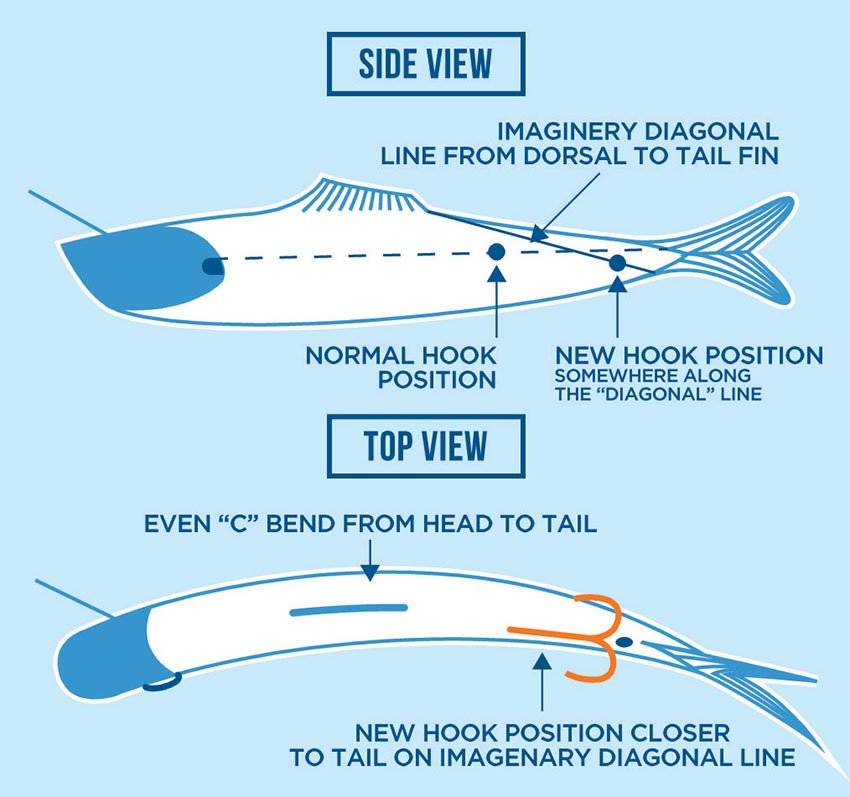
The Corkscrew Roll


Tom Davis at Possession Point near Sooke
The benefits of learning how to present baits in different ways means anglers can rig the same bait heads with the same baits on three rods and have them rolling with three different actions. It’s like having three lures in one. Salmon don’t take the same lures or bait presentations every day, so giving them a different look can trigger strikes that otherwise wouldn’t happen. You can adjust the bait bend and/or change the hook position to make all three presentations compatible with your trolling speed. More bend with the hook moved forward equals a faster roll; less bend with the hook moved back slows it down.
This article appeared in Island Fisherman Magazine. Never miss another issue—subscribe today!
One Comment
Leave A Comment
Visit the Store
$34.99
$34.99
Featured Catch

Joel Unickow halibut (Photo: Rob Frawley Lucky Strike Sportfishing Tofino)
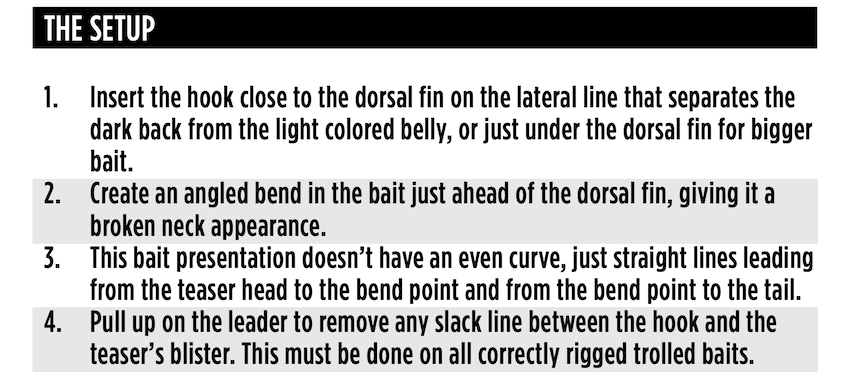









Nice to see you’re still in the Game Tom. Some real good stuff on here.! Keep it coming.